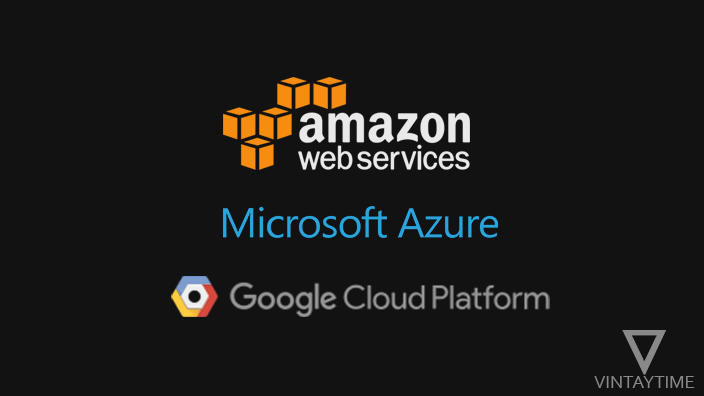INTRODUCTION
The global public cloud computing industry is expanding vastly and is predicted to reach 490 billion US dollars in 2022. If you work for a contemporary software development business, your team is most certainly employing the DevOps testing strategy to build, test, and deploy your products. DevOps automated testing successfully automates substantial portions of the deployment and development process for CI/CD. Through a common culture and collaborative practices, DevOps aids in the creation of a more Agile, efficient, and structured production workflow.

Public cloud services expenditure by end users globally from 2017 to 2023
WHAT IS CLOUD TESTING?
Cloud testing or mobile app testing is the practice of testing software applications utilizing a third-party service provider’s cloud computing capabilities. This may include testing the cloud resources, such as its architecture or cloud-native software as a service (SaaS) offerings, and leveraging cloud technologies as part of a quality assurance (QA) strategy.
Cloud automation testing may be beneficial to businesses in a variety of ways. This can assure excellent data throughput, availability, and security while minimizing downtime of the connected infrastructure or platform for enterprises evaluating cloud services.
CLOUD TEST AUTOMATION SCALABILITY
Cloud systems are designed to scale to meet your demands. Consequently, your test setup may grow organically without the extra hardware expenses required for on-premise scalability, which can quickly become obsolete as technology evolves.
STEPS TO HOW CLOUD TESTING ENABLES TESTING AT SCALE AND HOW IT REDUCES COSTS OF DEVOPS INFRASTRUCTURE:
1. Cloud mobile app testing saves expert resources time.
Cross-functional cooperation is essential in the DevOps approach, yet this frequently results in highly experienced DevOps engineers spending time on things outside their primary activity.
DevOps engineers are responsible for a wide range of time-consuming tasks, including:
- Testing for frequent browser upgrades from all available browsers across devices (mobile, desktop).
- Scripting setups for automated reconfiguration of test servers for different browser versions, OS versions, and platforms.
- Maintaining testing infrastructure, including program, library, and operating system updates, as well as hardware upgrades or replacements.
Large-scale automated testing needs ongoing infrastructure upkeep. DevOps engineers are highly sought-after professionals. Their time should be focused on test automation techniques and testing optimization rather than on time-consuming maintenance tasks that can be automated with the correct technology.
Moving testing infrastructure to the cloud would allow DevOps automated testing teams to spend less time on maintenance, cross-browser testing, and configuration scripting.
2. Cloud testing shifts infrastructure costs from capital to operating expenses.
There was a time when a program had to be compatible with only one or two desktop browsers. It must now function on at least eight browsers and five distinct platforms. It should also be run at several screen resolutions for responsive UI. Cross-browser and cross-platform testing is the time-consuming process of repeating each test on each browser and platform combination. For a test suite of 1,000 tests, you may need to run 100,000 times to cover the whole test matrix.
With today’s software application quality requirements, testing hundreds of combinations of browsers, devices, operating systems, and platforms is essential. It cannot be jeopardized. And the more possibilities you must test, the more testing servers you will require. The servers are expensive. Office space, furnishings, and power expenditures are equivalent to the cost of those costly servers.
Moving testing infrastructure to the cloud can reduce upfront capital expenditures (CapEx) to a pay-as-you-go approach with ongoing expenses that can be scaled depending on project requirements. It also eliminates the costs of upkeep and maintenance.
3. Cloud testing decreases the complexity of infrastructure
Setting up and operating the testing environment is a complicated procedure. In an open-source environment, testing teams often utilize one functional testing platform, such as Selenium or Cypress, and another tool for visual testing. Then they set up an external test environment, such as Selenium Grid, or they use third-party managed cloud services with Selenium wrappers to combine these components. You’d require staff to handle interconnections between various moving parts, monitor security posture, and regularly manage each subscription to ensure the total cost is within your budget.
Third-party cloud providers often provide pre-configured virtual images for each operating system. They are incredibly costly, with monthly rates reaching thousands of dollars for only a few dedicated instances. The number of cases, however, would not allow for large-scale automation or increased complexity.
Selenium Grid was created to coordinate numerous instances of Selenium operating on various servers. However, it is not designed to use distributed storage, dynamic scalability, and automated failover. It’s not appropriate for DevOps teams that want more flexible provisioning and seamless integration.
Cloud-first testing infrastructure would house all the testing ecosystem’s components in the cloud. It is a single end-to-end system that can be managed through a single interface. This means that scaling is independent of particular providers or subscription arrangements.
HOW HEADSPIN HELPS IN CLOUD TESTING
- HeadSpin offers a distinct solution for automated testing on both on-premise and hybrid deployment architectures.
- Customers may host all hardware and data using HeadSpin’s entirely on-premise deployment solution.
- Customers may also host UC in bare metal offered by HeadSpin on their virtualized servers, or they can choose total air gapping based on their needs.
- HeadSpin’s hybrid on-premise deployment includes a virtual private cloud with on-premise PBox and AV Box.
- It hosts UC and data and allows customers to connect their gear or devices to the HeadSpin Platform.
- With its worldwide device infrastructure, HeadSpin offers a one-of-a-kind solution for cloud automation testing (dedicated and shared).
- Customers may connect to actual devices across locations, allowing automated cloud testing on real devices.
- HeadSpin’s AI provides actionable insights across the digital experience lifecycle, allowing QA teams to identify and address issues rapidly.
CONCLUSION
Before the epidemic, cloud computing was gaining traction. However, in the aftermath of the epidemic, it has become almost essential for businesses. Cloud-based mobile app automation testing provides various benefits to enterprises, including easy updates, cost savings, security, and the capacity to satisfy corporate goals. It also saves time and boosts team productivity by allowing them to work remotely and on any device. These benefits have immediately and significantly enhanced the adoption of cloud automation testing.




